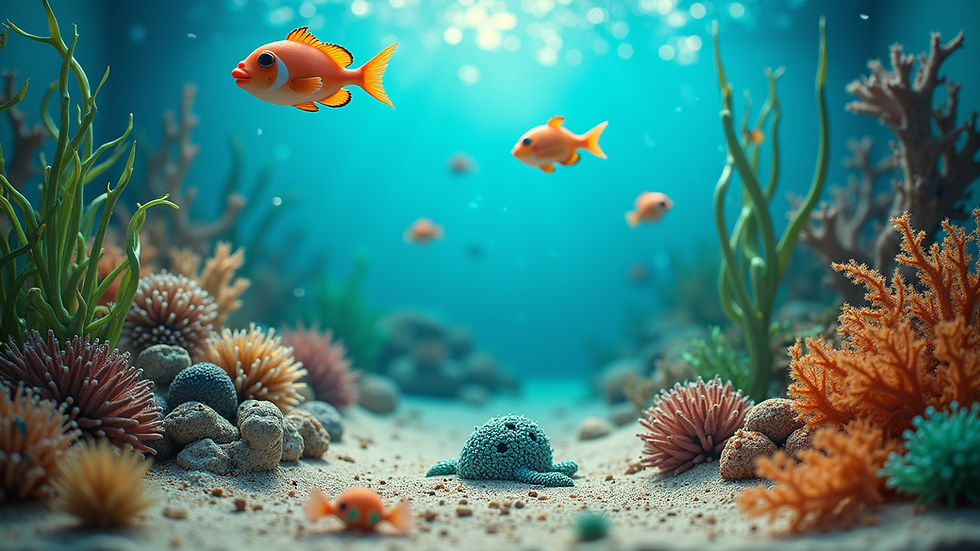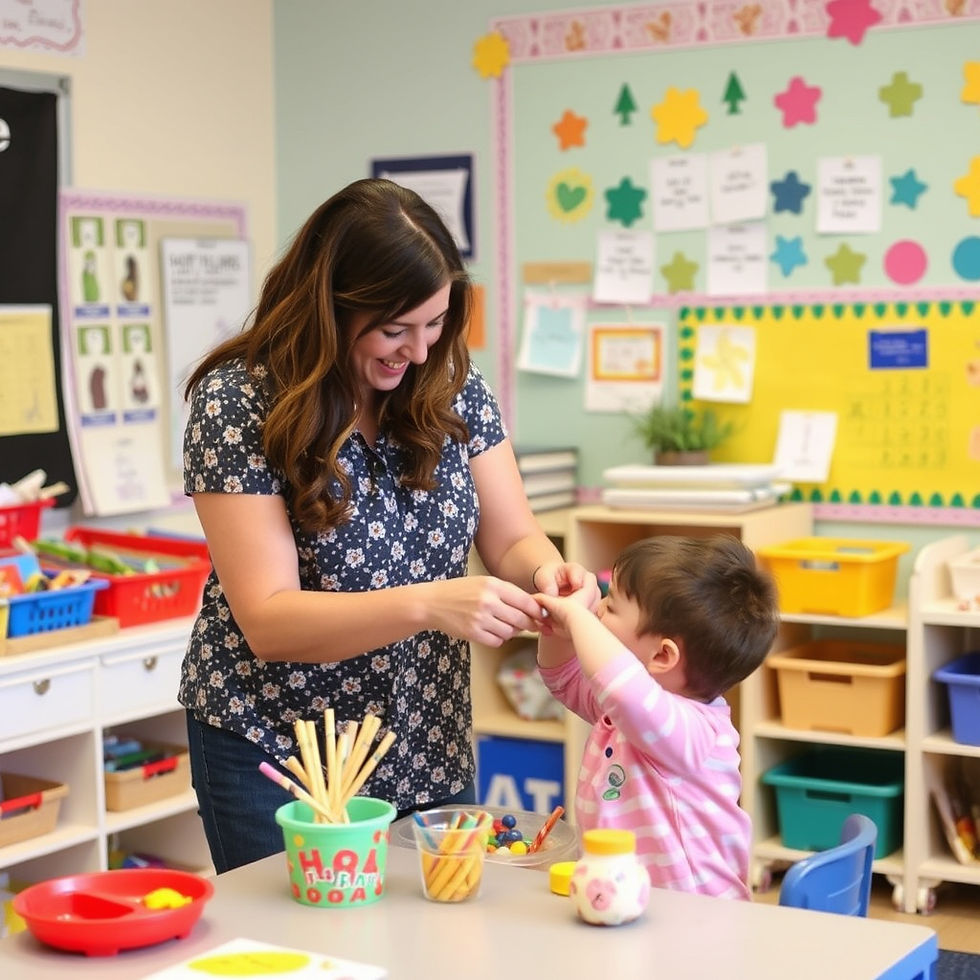Exploring the Wonders of Ocean Life: Engaging Early Care and Education Classrooms This Summer
- Wild About Learning

- May 13
- 3 min read
As summer approaches, many educators are seeking creative ways to engage young minds. The ocean, with its vast array of life and enchanting mysteries, serves as a perfect theme for summer learning in Early Care and Education (ECE) classrooms. Exploring ocean life not only promotes curiosity about the natural world but also encourages imaginative play, scientific inquiry, and emotional literacy.
In this blog post, we will explore various activities and lessons that can help children discover the wonders of ocean life this summer.
Discovering Ocean Life Through Books
One of the best starting points for any educational theme is literature. Books about ocean life can captivate young children while informing them about the different creatures that inhabit our seas.
Introduce a selection of illustrated picture books that focus on marine biology, ocean habitats, and environmental themes. Some excellent choices include “Commotion in the Ocean” by Giles Andreae and “The Pout-Pout Fish” by Deborah Diesen. Create a cozy reading nook that mimics an underwater environment with blue fabrics and ocean-themed decorations to enhance the experience.
Engaging stories not only build vocabulary but also spark curiosity about ocean ecosystems and marine conservation. For example, a child might learn that coral reefs support about 25% of all marine life, inspiring them to think about how they can help protect these fragile ecosystems.

Incorporating Art and Creativity
Art is an essential part of early education and can be seamlessly integrated into lessons about ocean life. Crafting ocean-themed art provides children with opportunities to express their interpretations of sea creatures while reinforcing their learning.
Encourage learners to create their own ocean dioramas using shoeboxes, colored paper, and various materials to represent marine habitats. For example, children can use cotton balls as clouds, sandpaper for beaches, and even made-up creatures to personalize their scenes. Painting or drawing favorite sea animals also allows them to exercise creativity, recalling what they’ve learned from storytime.
Another great idea is to organize a group mural project where children can collaboratively design a large wall display of an ocean scene. This not only fosters teamwork but also reinforces the idea that ecosystems are interconnected, much like the creatures that inhabit them.

Engaging Science Experiments
Bringing the mysteries of the ocean into the classroom also offers the opportunity for scientific exploration. Simple experiments can introduce key concepts such as buoyancy, density, and marine ecosystems.
Create a "sink or float" station where children can test various objects to see if they sink or float in a large bin of water. For instance, items like plastic sea animals, shells, and seaweed can spark discussions about buoyancy and how aquatic animals adapt to their environments.
Another exciting experiment demonstrates the salinity of ocean water. By dissolving different amounts of salt in water, children can observe how salinity affects buoyancy. It is fascinating to note that oceans are about 30% salt. Such hands-on activities help solidify their understanding of physics in oceanic environments while being fun and engaging.
The Importance of Environmental Awareness
Teaching young children about the ocean opens conversations regarding environmental awareness and the importance of protecting marine habitats. Discussing issues like pollution and climate change can be made age-appropriate through interactive storytelling and games.
Introduce activities that involve sorting recyclable materials or creating art from recyclable items to highlight the importance of caring for our planet. Engaging children in discussions about marine wildlife conservation fosters empathy and responsibility. For example, knowing that over 1 million marine creatures die each year due to plastic pollution can inspire children to take action.
As they learn about the ocean, encourage children to think about what they can do to help protect it. Simple actions, like reducing plastic use or participating in local clean-up events, can instill a sense of responsibility toward their environment.

Embracing Ocean Education This Summer
This summer, Early Care and Education classrooms can explore the wonders of ocean life through literature, art, science, and environmental education. These activities nurture a love of learning while instilling a sense of stewardship for our planet's precious oceans.
By engaging young minds with fun and educational experiences, we help cultivate curious, informed individuals who will care for the world they inhabit. Introducing children to the fascinating realm of the ocean serves as a powerful theme that can inspire them for a lifetime. As they dive into learning this summer, let’s encourage them to cherish and protect the vibrant life beneath the waves.
With creative planning and enthusiastic participation, the summer months can become a journey filled with exploration and discovery. Here's to a wonderful and enriching summer filled with the wonders of the ocean!



Comments